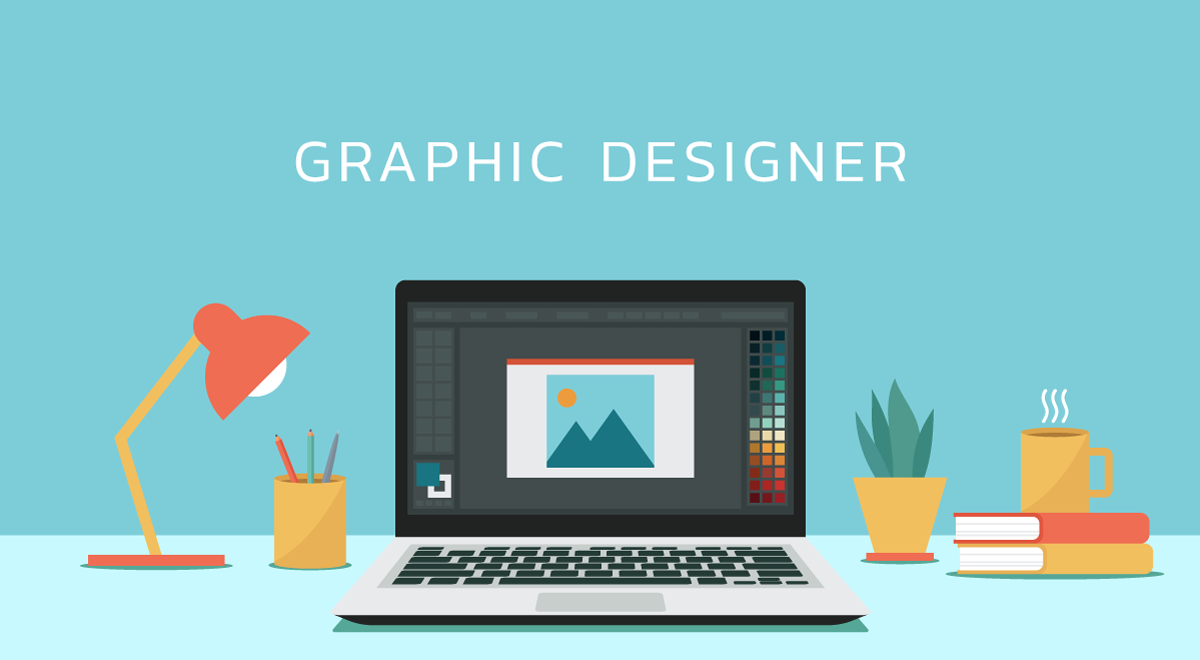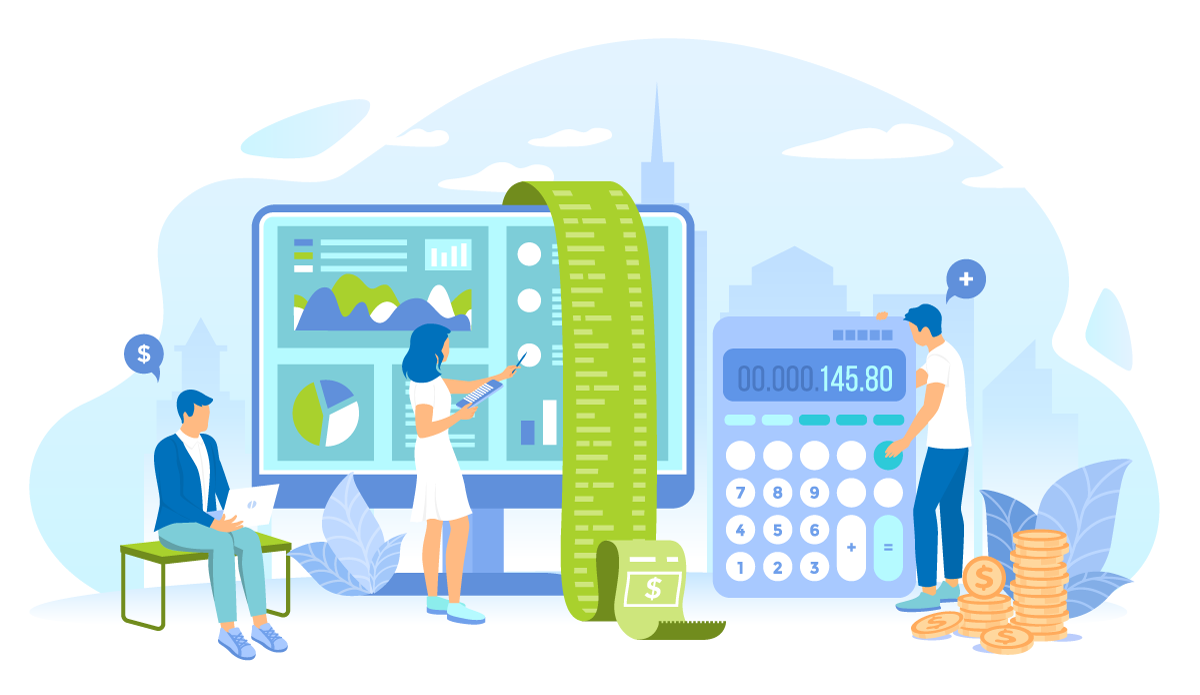
Use Clip Studio Paint to start your career in the graphic design industry! Discover the features and benefits of Clip Studio Paint for freelancers, design agencies, and in-house design, and use our continually updated education resources to learn new skills and improve your own.
How to become a graphic designer

Becoming a graphic designer might be the perfect fit for you if you are passionate about art and design.
What a graphic designer does
Graphic designers create designs in collaboration with clients for various media such as social media, printed matter, and packaging, and are responsible for visual communication in the graphic domain. Duties are diverse and include requirement definition, client management, pricing and budget management, and production using graphic design software.
Education requirements and required skills
To become a graphic designer, you need to foster your skills in graphic design software such as Adobe Creative Suite or Clip Studio Paint, as well as develop proficiency in design principles, color theory, and typography. Generally, you go to college and get a bachelor's degree or take courses online to acquire design skills.
How to get a graphic design job
Having a strong portfolio is key to opening doors and getting job opportunities. Post work that you completed while studying and self-produced works to show off your proficiency in design and skills. You can also build your portfolio by gaining experience through internships.
How to work in the design industry
Working in the world of design can be an exciting and rewarding career, but it also presents its own challenges. Designers must communicate effectively with clients and team members, manage time and workloads effectively, and stay up to date with the latest design trends and techniques. Whether working at a design agency, as a freelancer, or within a company, developing strong design skills, communication skills, and business knowledge is essential for succeeding in the industry.
Freelance design, design agency, in-house design

There are many different ways to work as a graphic designer. In this section, we will explore three popular options: freelance design, work at a design agency, and in-house design. Discover the pros and cons of each, learn more about the industry, and learn how to get the most out of your design career.
Freelance designer
This is a great working style for people who want to be independent and do not want to work in an organization. The advantage is that you have the freedom to choose the projects you participate in and where you work. However, in addition to design work, you now have to do everything from selling yourself to clients, pricing and budget management, and billing. In terms of income, there is no medium- to long-term guarantee like a company employee, and there are no company benefits.
Design agency work
You can work as a company employee at a design agency that undertakes design work for clients. Your colleagues would be design professionals, and it is an environment where you can share knowledge and improve your skills through friendly rivalry. However, because you have a client, you will need to meet their expectations, and it is a work style that is often defined by strict deadlines. There is also the career path where you change jobs to an in-house designer after acquiring skills as a designer at an agency.
In-house designer
You can work as a company employee and be in charge of the company's design work. Usually you work as part of the marketing department or creative department. It is an environment where it is easy to gain a deep understanding of the company's services and management strategies and give life to these in the form of designs. However, depending on the company, there may be only a few in-house designers with design work requested from various departments, making it extremely demanding.
Pricing and budgeting of design services

For any design project, pricing and budgeting is extremely important. In this section, you will learn about different price settings for design services and how to set fair and competitive prices. You will also learn about budget management and how to work within budget while delivering quality design work.
Pricing
Compensation and salaries for graphic designers vary by skill level and country/region. Here, we will introduce the pricing structure of each design service and how to set fair and competitive rates for those who have no experience as professional designers.
Freelance designer
When you get freelance work, you set your own price and propose it to your clients. Set fair rates to win new contracts and gain the trust of your clients who want to work with you. Entry-level designers just starting up a design business should, as a first step, research the fee structure and market rates in the design industry, using freelance job sites as a reference to understand the market they are entering. Next, identify your existing skills and deliverables, and compare them to the ones offered by existing freelance designers to establish a fair price. Freelancers can raise their own prices as they gain experience.
Design agency and in-house designers
If you start out as an entry-level designer in a company, the amount will be determined based on the salary structure of the organization to which you belong, and will also vary depending on experience and skill requirements. Salaries are usually presented at the job interview stage, so be sure to communicate your skills so you can negotiate appropriately. A portfolio is the best way to show your proficiency in design. In the future it can be possible to get a position such as creative director or department head, and raise your salary as your level of responsibility increases.
Budget management
Freelancers and designers at agencies must discuss budgets with clients. Client communication and client management are key. You should do a thorough hearing of the project requirements requested by the client. You should confirm the project purpose, period, scope of work, budget, etc. Set fees for each work item, such as progress management costs and additional corrections, and check whether it can be achieved within the budget.
Doing client work means you have to meet deadlines and deliver high quality deliverables within budget. For that reason, it is important to use graphic design apps to increase design efficiency. For designers, it is essential to master the functions of free or paid graphic design apps such as Clip Studio Paint.
Design portfolio and marketing

A strong design portfolio is important for demonstrating your skills and experience to potential clients and employers. Your portfolio should not just contain your best work, but also a variety of designs that demonstrate your versatility and range. Also make sure that your portfolio is organized and easy to navigate. Marketing yourself as a designer is also important for attracting clients and building your brand. Social media, networking, and attending industry events are also effective ways to market yourself as a designer.
Creating a design portfolio
In this section, you'll learn how to build a strong design portfolio that highlights your strengths and showcases your expertise in different design disciplines. We'll also show you the best ways to present your portfolio and how to impress potential clients.
How to build a strong design portfolio
Recognize that your portfolio is your marketing collateral when you present yourself to clients. In addition to introducing the work, write the outline of the design project as well as your thoughts and role in the production process. If there are too many projects to show off, select the ones that work the best as examples. You’ll want to show off not just your proficiency in graphic design, but if you have experience as an intern or part-time worker, communication and management with clients will be a good strength to highlight.
The best way to present your portfolio
Clients will be looking at a lot of submissions, so you need to find ways to stand out from the other designers. Your portfolio is both your main marketing material and your design work. Be particular about color schemes, fonts, and layouts, to sell yourself well. In order to attract clients, it is important to research the skills they want and what they value in their work, and then examine your own strengths accordingly.
The importance of continuing education and professional growth in design

In the world of design, continuing education is essential. Keeping up with the latest trends and techniques, as well as continuously learning new things and improving your skills are important for designers. Workshops, webinars, and online courses are available to expand your knowledge of graphic design software, color theory, typography, and design theory. By continuing to learn, designers gain new insights and inspiration to do more creative and innovative work.
As mentioned above, design tool skills are essential for designers. Among them, Clip Studio Paint is a powerful design software that offers a wide range of features and tools for digital and vector design. Hone your skills to work efficiently with vector layers, 3D models, customizable brushes, etc. We have tutorials on this website, so be sure to use them to improve your skills.
Introduction to graphic design principles and tools in Clip Studio Paint
Summary
We hope that you learned a bit on how to build a career in graphic design. In order to start working as a designer, it is important to work on proper pricing, budget management, a strong portfolio, and continuing your design education. We hope that Clip Studio Paint will help you succeed in the graphic design industry and aid your professional development!
What Artists Are Saying About Clip Studio
CLIP STUDIO PAINT PRO
for character art, concept art, illustration
CLIP STUDIO PAINT EX
for comics, manga, webtoons & animations
PRO
EX
Single-page illustrations & comics
Multi-page comics/manga & illustrations
Up to 24 frames for gifs or short animations
Unlimited frames for professional animation
Natural, customizable pen and brush tools
Vector layers
More than 10,000 free downloadable brushes and materials
3D models and drawing figures
PSD compatibility
RGB and CMYK compatible
For macOS and Windows
-
Export and print multi-page files
-
Convert images and 3D models into lines and dot shading
Free technical support
Free web services & community
Clip Studio Ask / Assets / Tips / Share











